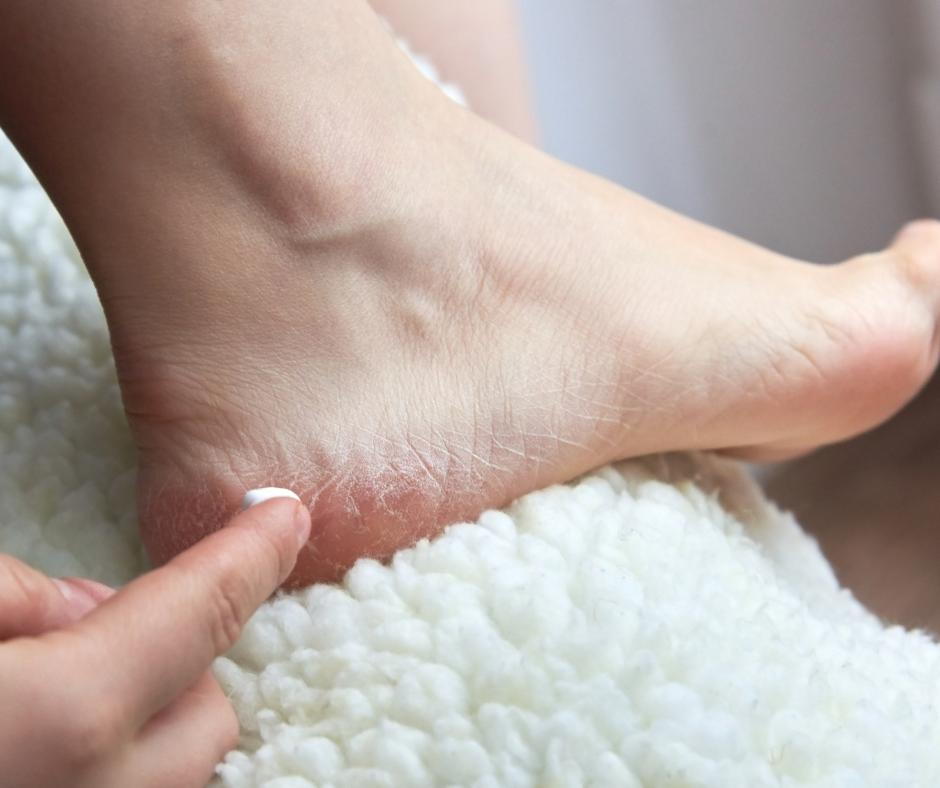- posted: Oct. 31, 2022
Wintertime can be quite harsh on our feet. Our feet go from warm, centrally heated houses to arctic conditions outside. Temperature changes take their toll on the skin, making the skin dry and prone to cracking open. Dry and cracked skin are the two conditions most people experience on their feet when it starts to get colder. Paying close attention to the skin on our feet and actively preventing major skin concerns is the most effective way to care for our feet during the cold-weather months. 
The most common skin concerns for winter are:
- Dry and cracked skin. This may even worsen as you grow older because your natural oil production decreases and your skin becomes thinner, making you more prone to dryness when the temperatures drop.
- Fissures is the medical term for the result of severely dry skin. Common symptoms of fissures include feet getting thicker and becoming callused before they bleed and crack, which could lead to infection.
- Increased pressure. You may experience this while walking in shoes, but it can also cause cracks on the bottoms of your feet. Cracks will typically appear on your heels, where winter boots and shoes rub.
- Fungal infections. Skin flare-ups affiliated with Raynaud's syndrome may be more common during the winter months which decreases blood flow and can cause fingers and toes to change color. Painful inflammation called chilblains, causes itching, red patches, swelling, and blisters, are other concerns to pay close attention to during the cold-weather months.
Prevention Is the Best Treatment
- Practice Good Hygiene. Wash your feet thoroughly when you bathe or shower, dry them well, and always put on fresh socks. These precautions can help you prevent toenail fungus, ingrown toenails, and athlete’s foot. Bonus: Bring an extra pair of warm, dry socks with you wherever you go. Just in case!
- Moisturize. Indoor heating and dry winter air can contribute to dry, cracked skin on your feet and heels. Use a quality moisturizing cream and take a few extra minutes to thoroughly rub the lotion on your feet.
- Support. Wear the right kind of winter socks to insulate and protect your feet. Also, wear shoes and boots that are roomy and don’t constrict your feet or cut off circulation. For further tips on finding the right winter boots for you, check out our blog!
- Safety. Fractures go up in winter months, as do falls and ankle dislocations or broken toes. Avoid foot fractures by wearing boots or waterproof shoes with a low heel and a traction sole if there’s a possibility of walking on a slippery surface. Always wear appropriately designed and fitted footwear for sports activities like skiing, snowboarding, or ice skating.
- Listen To Your Feet. Worried about the health of your feet this winter? Call (860)-632-5499 to schedule an appointment at our Cromwell, Connecticut office with our podiatrist Dr. Adam Mucinskas, or visit our website for more information.
Questions or Comments?
We encourage you to contact us whenever you have an interest or concern about our services.
Call Today (860) 632-5499
162 West St Ste K Cromwell, CT 06416






